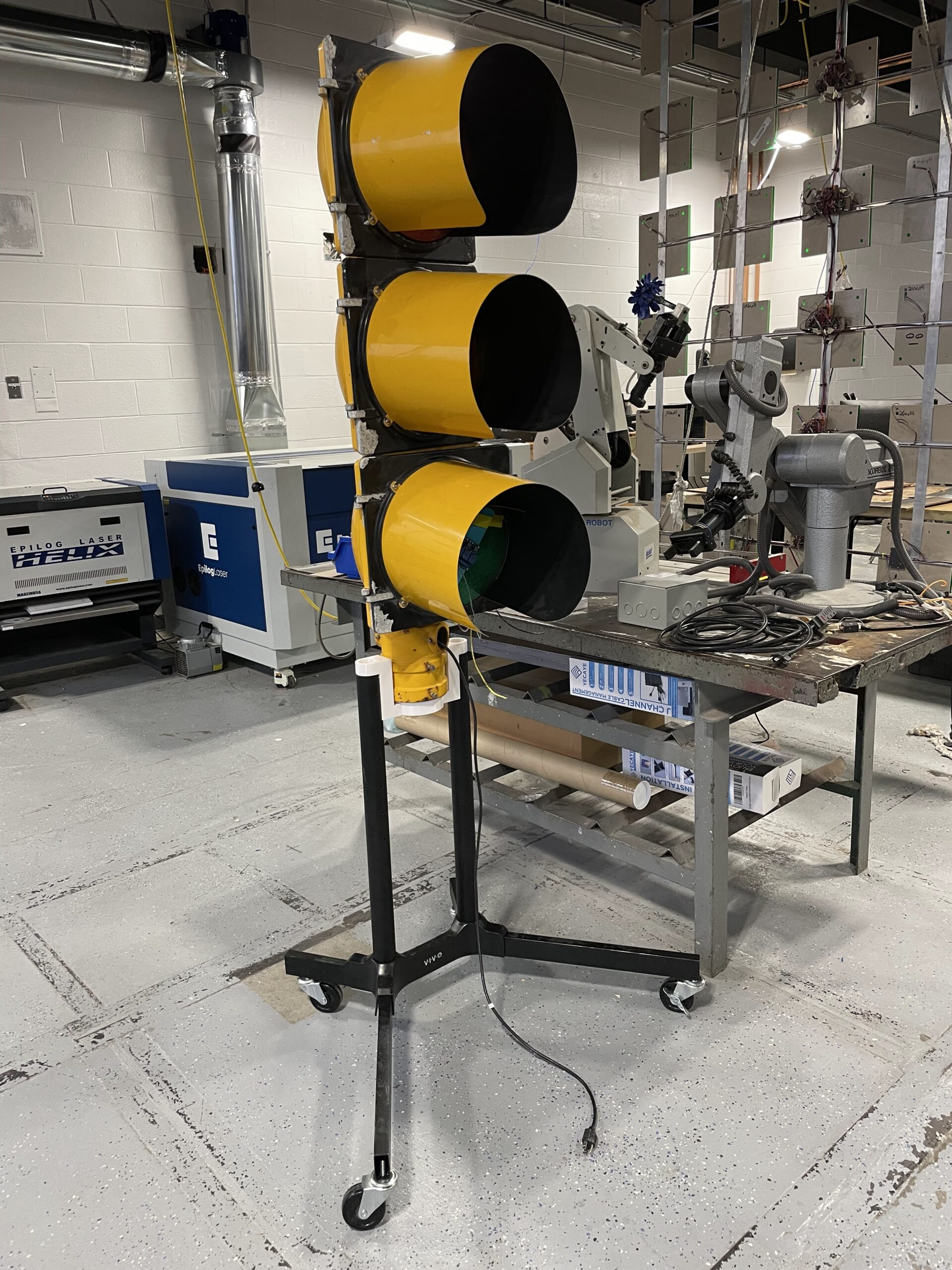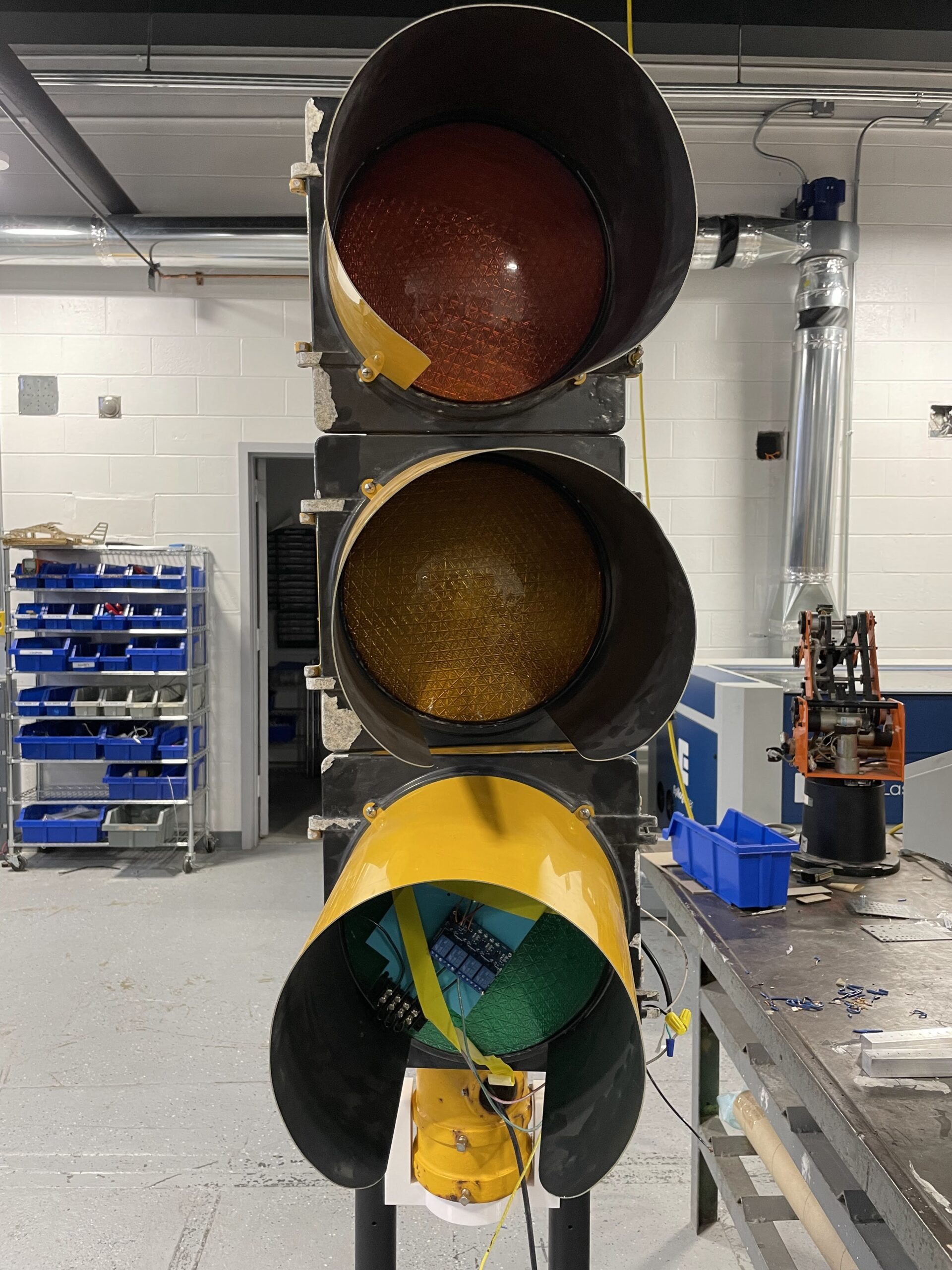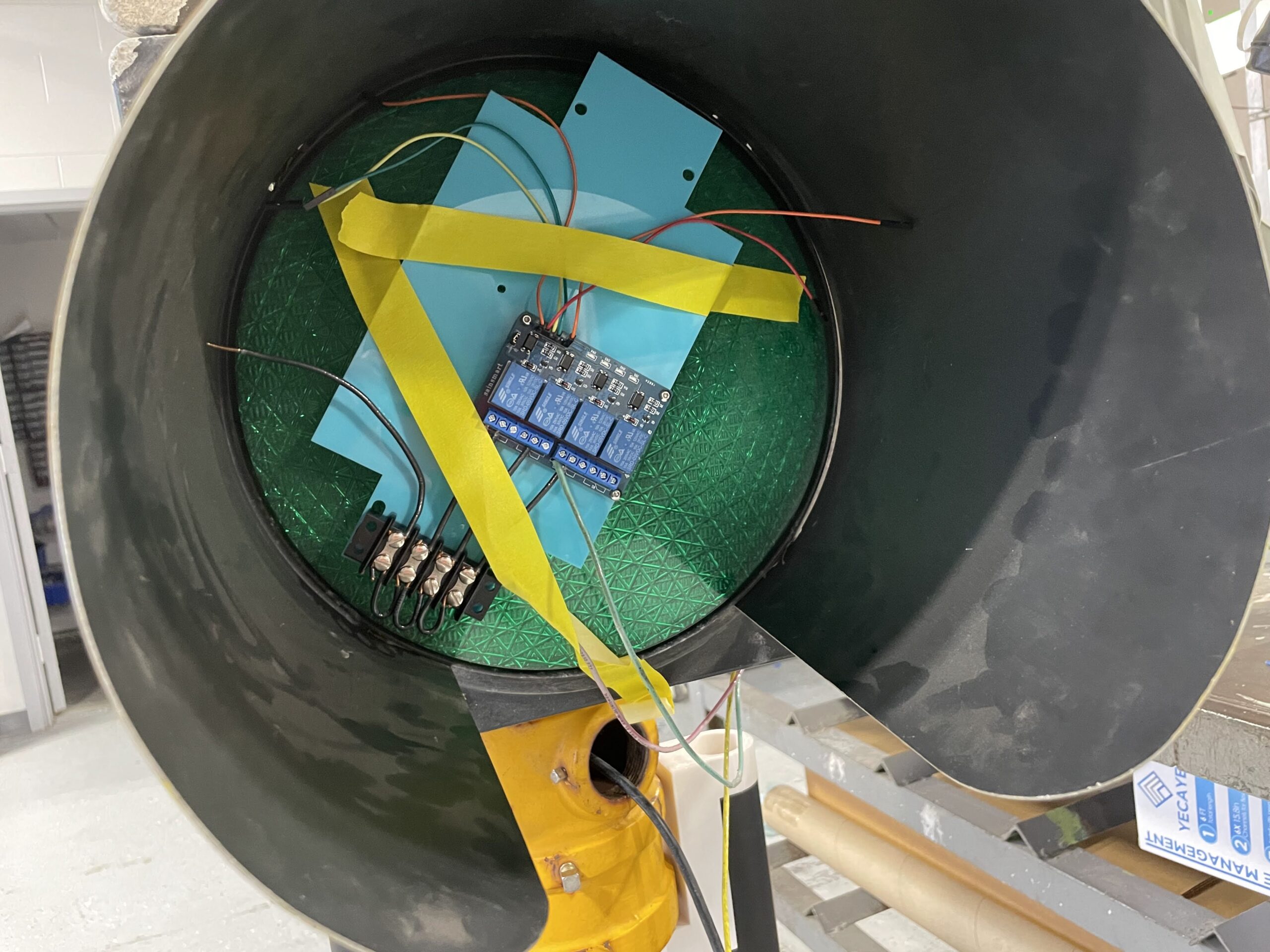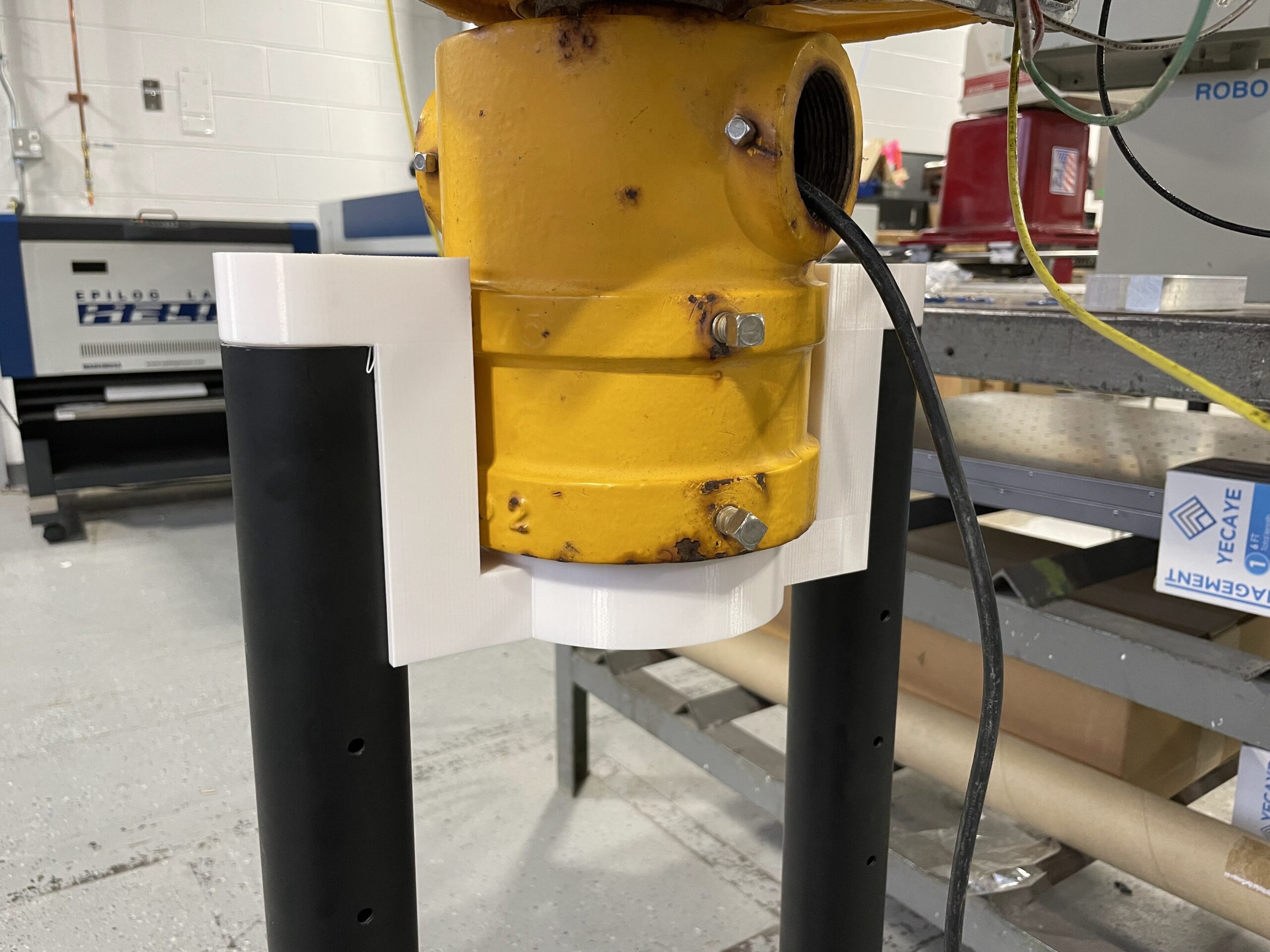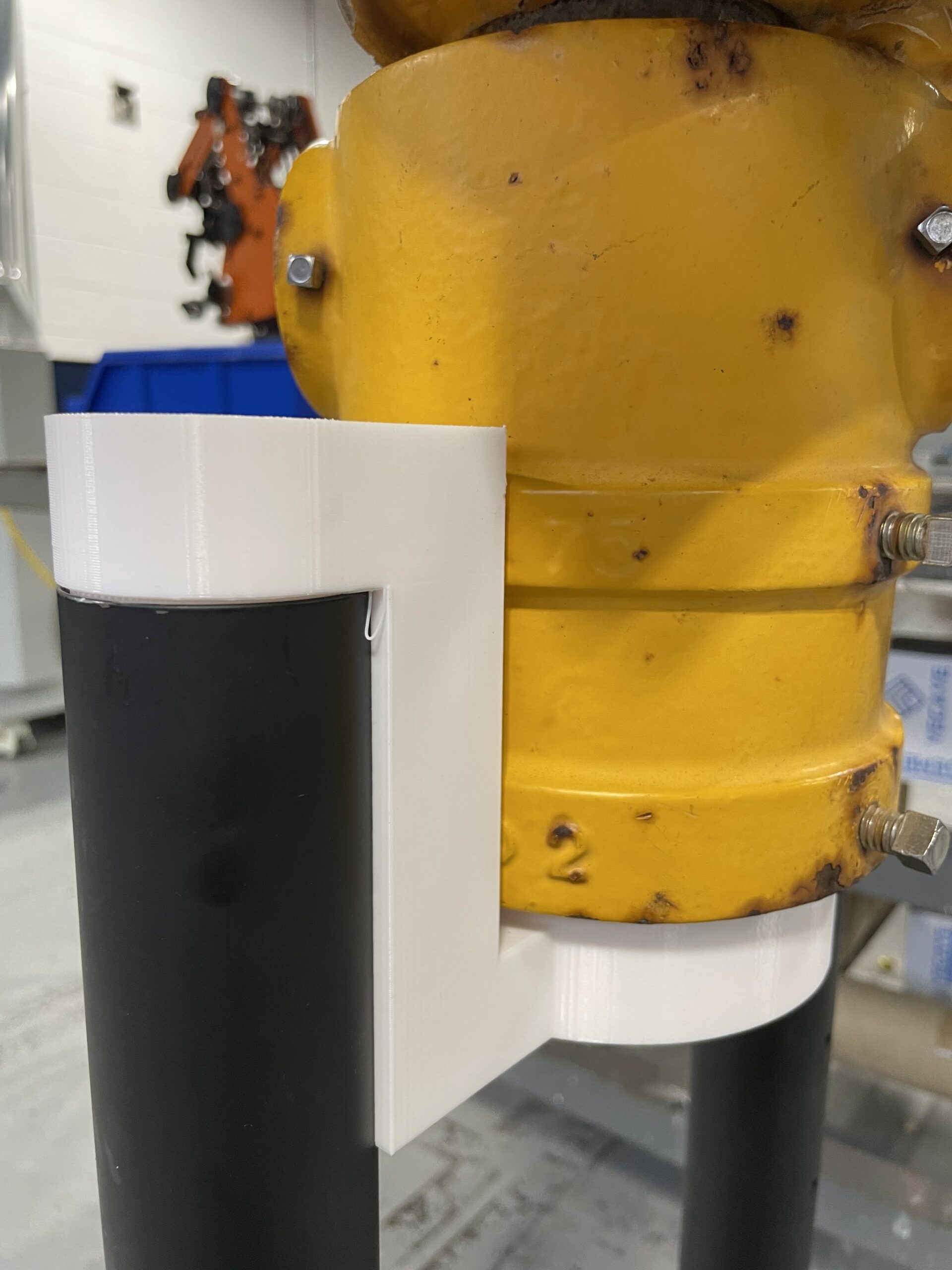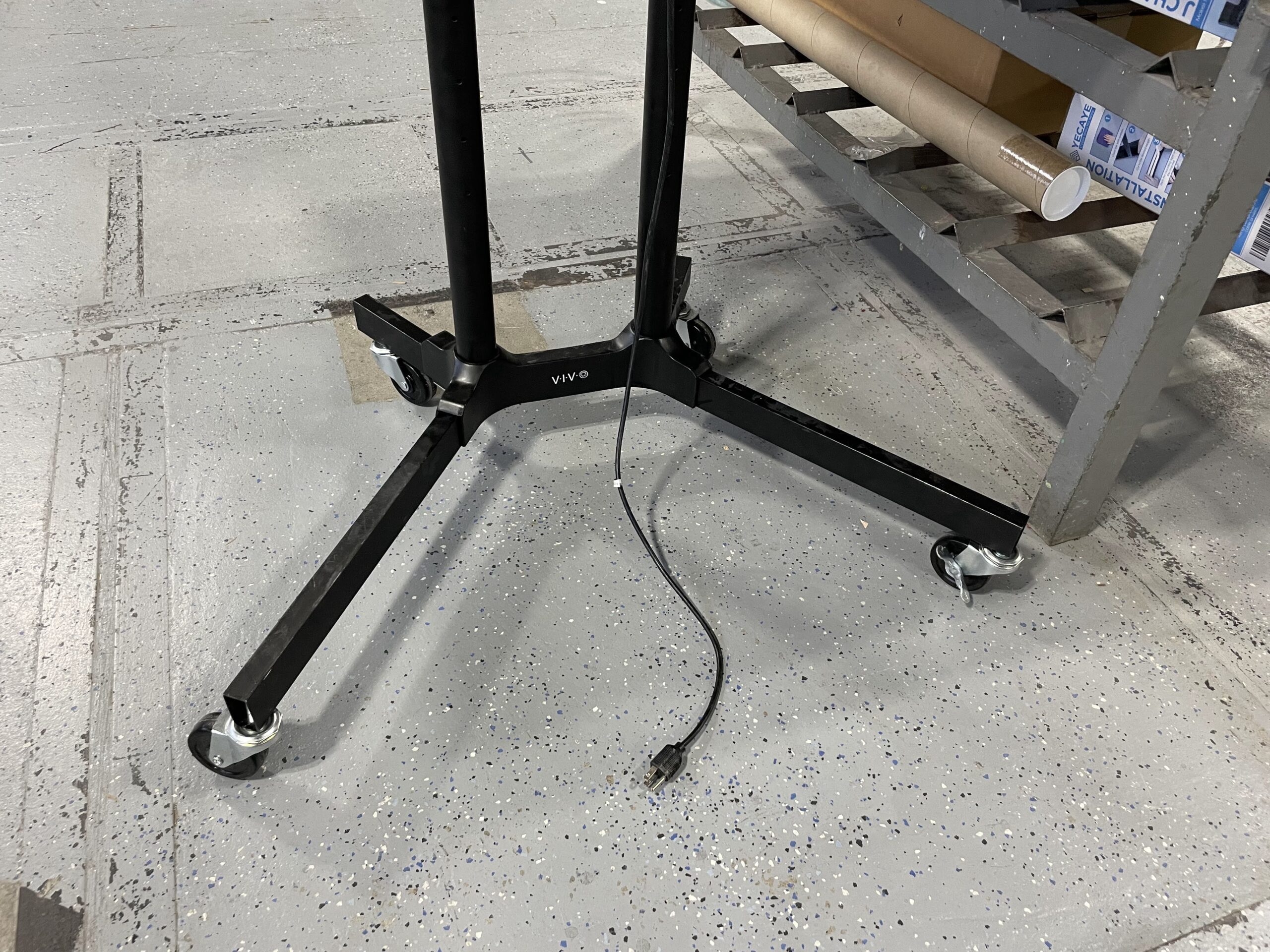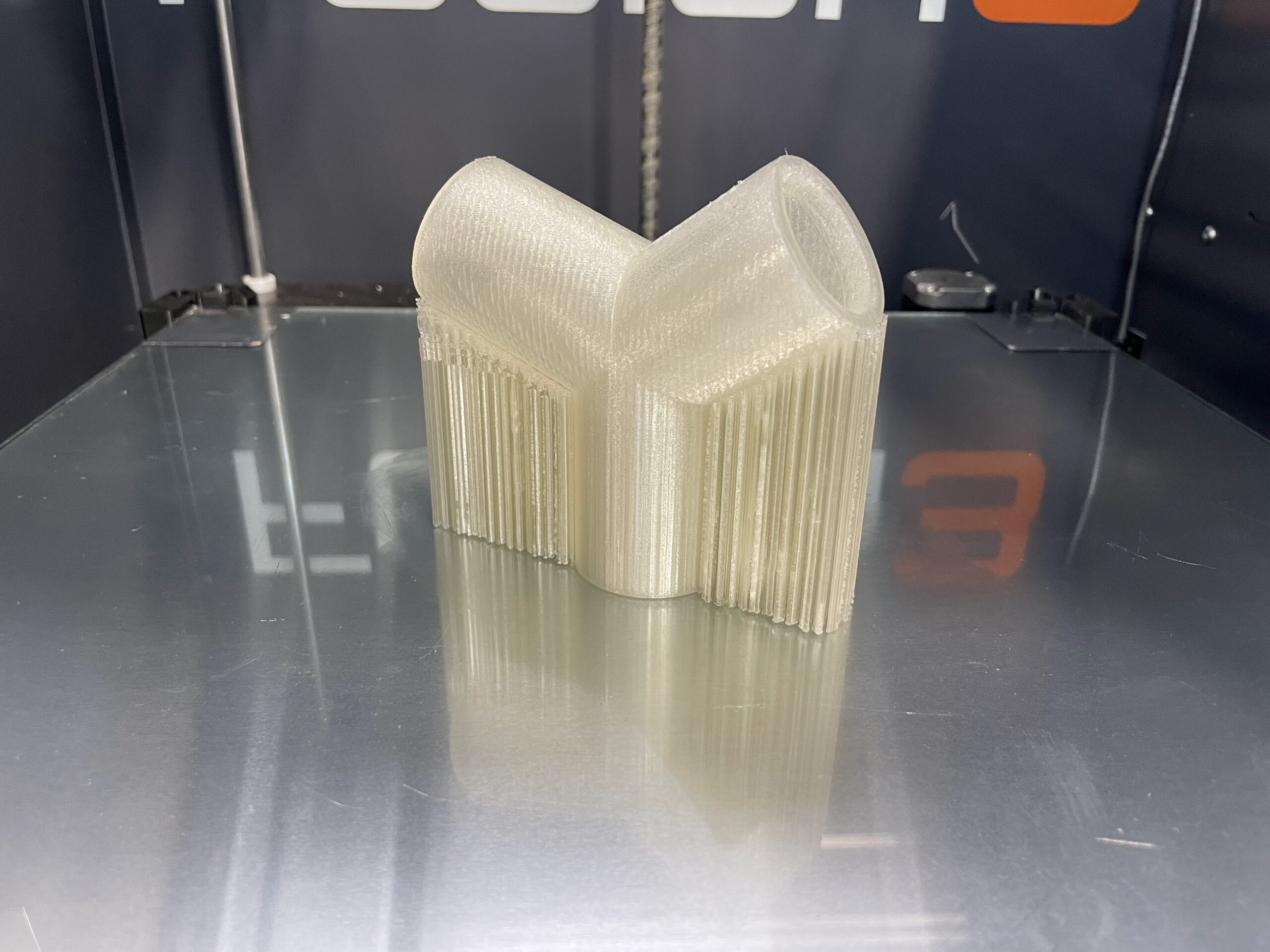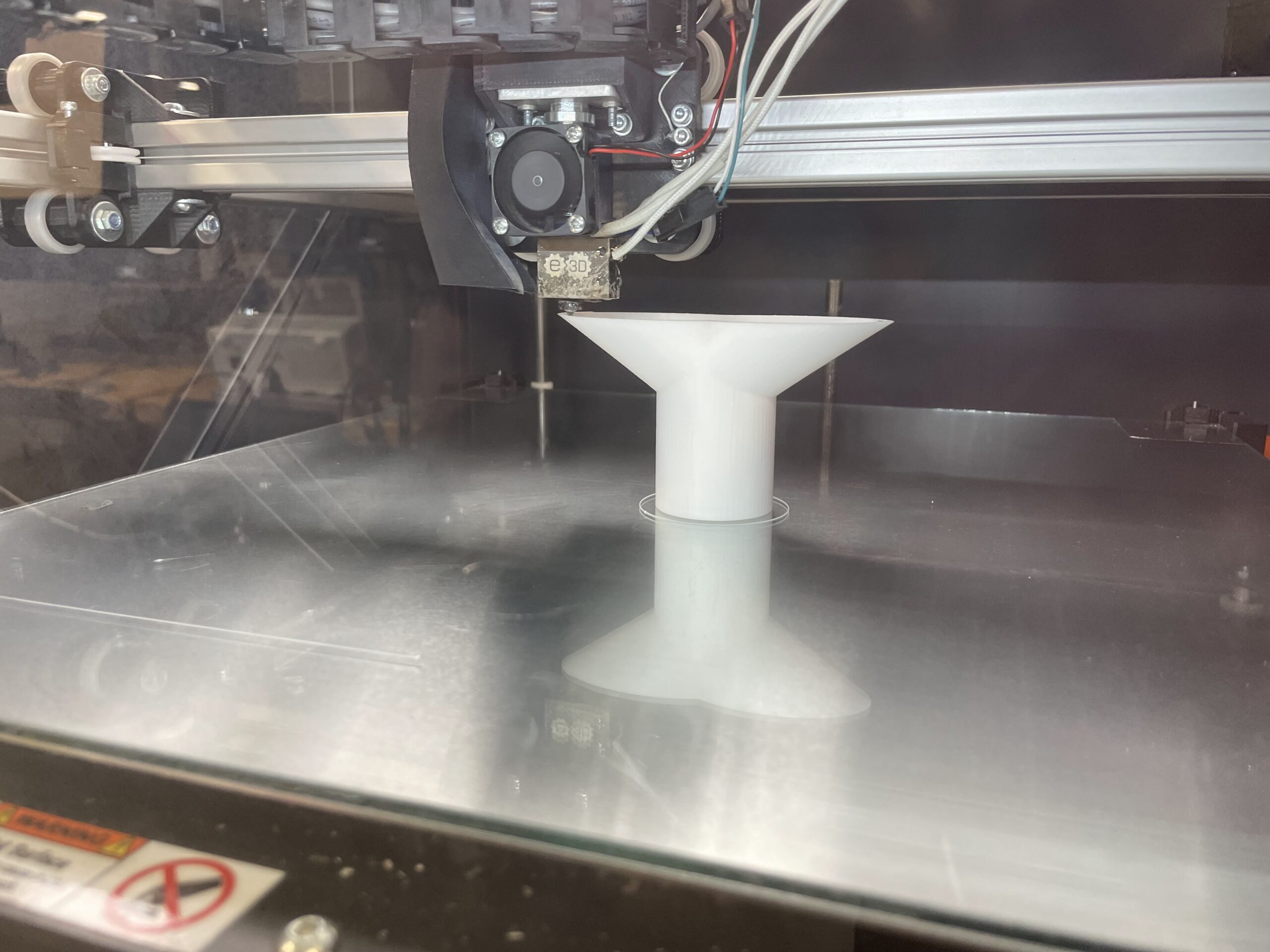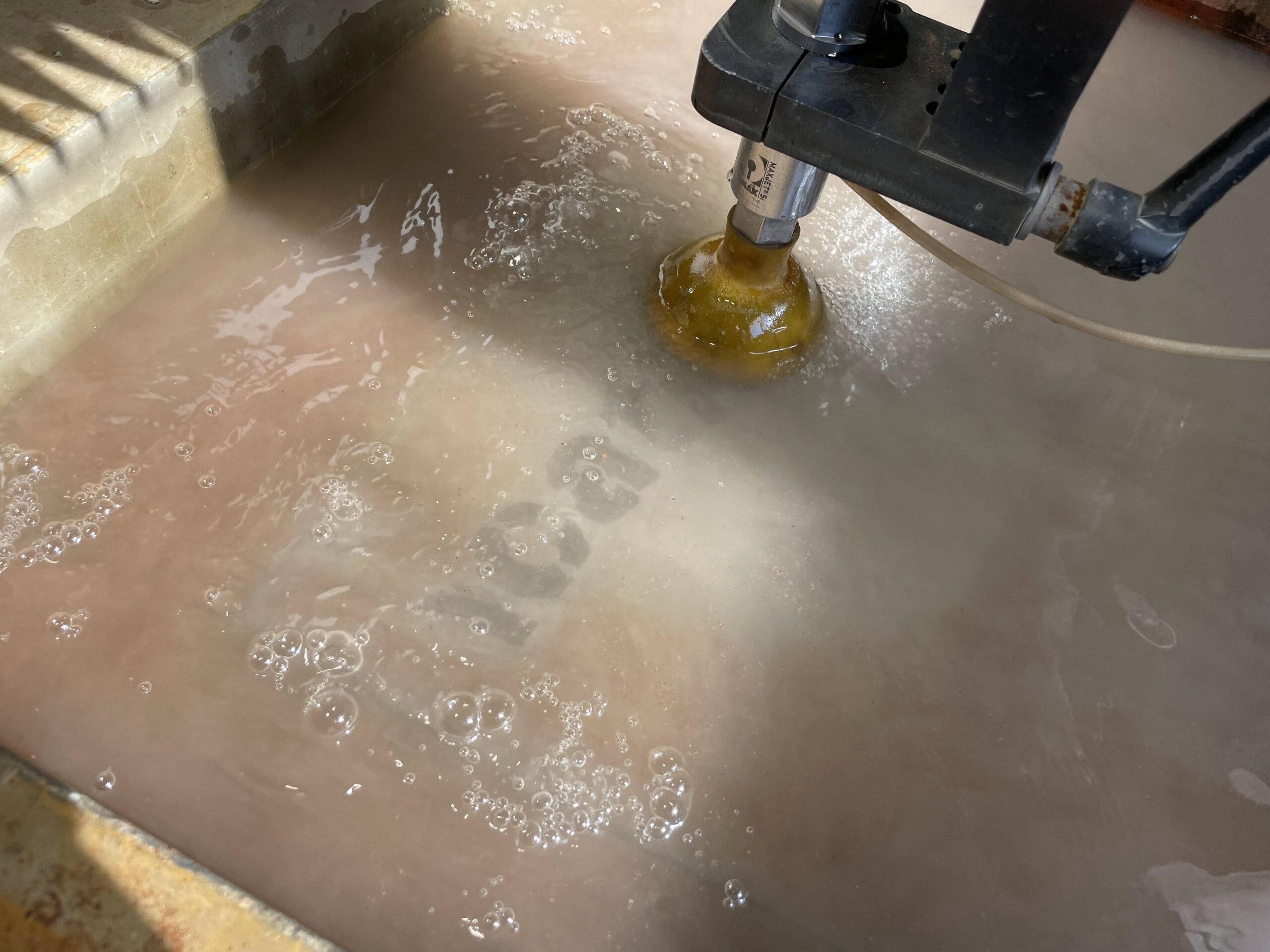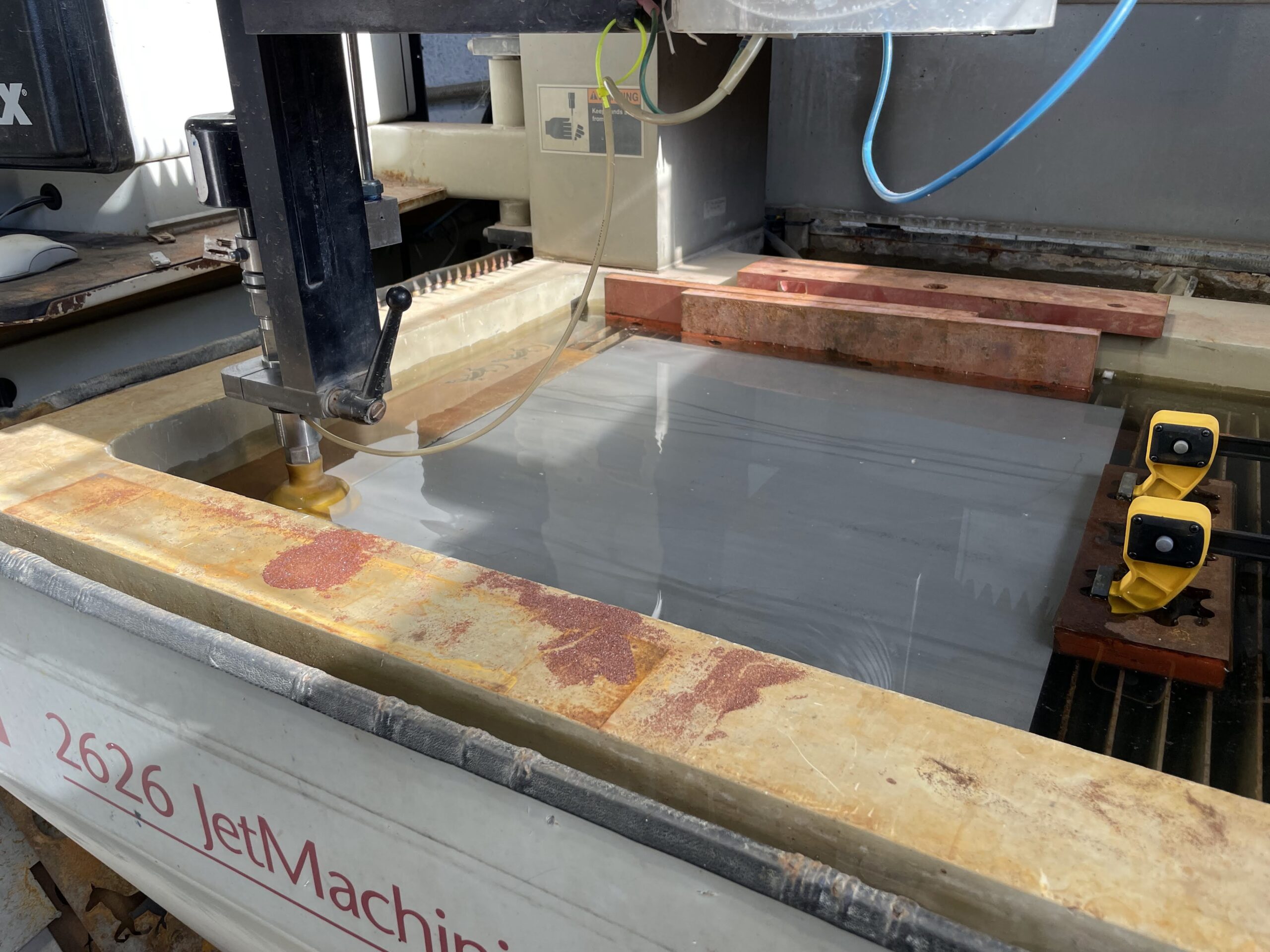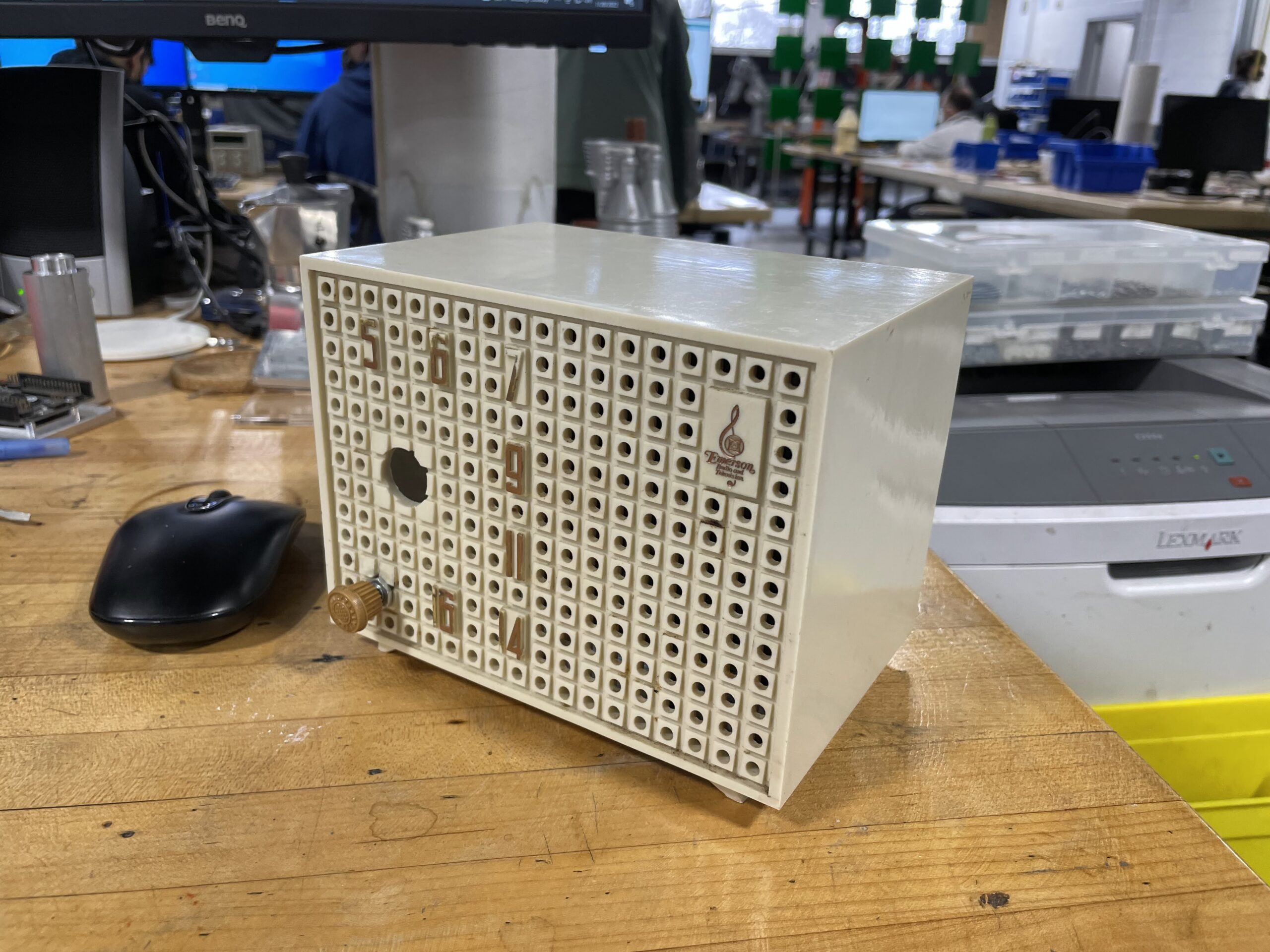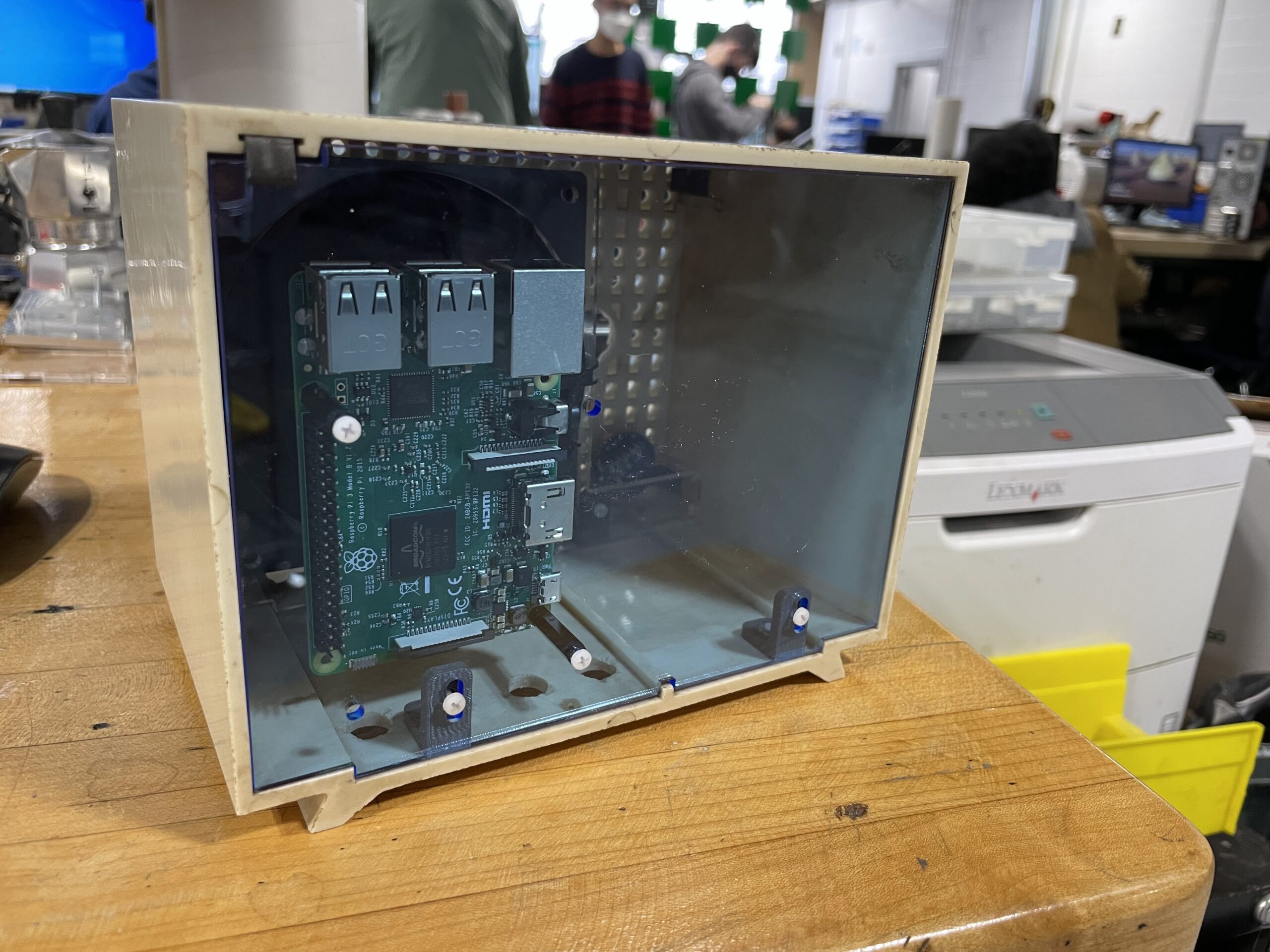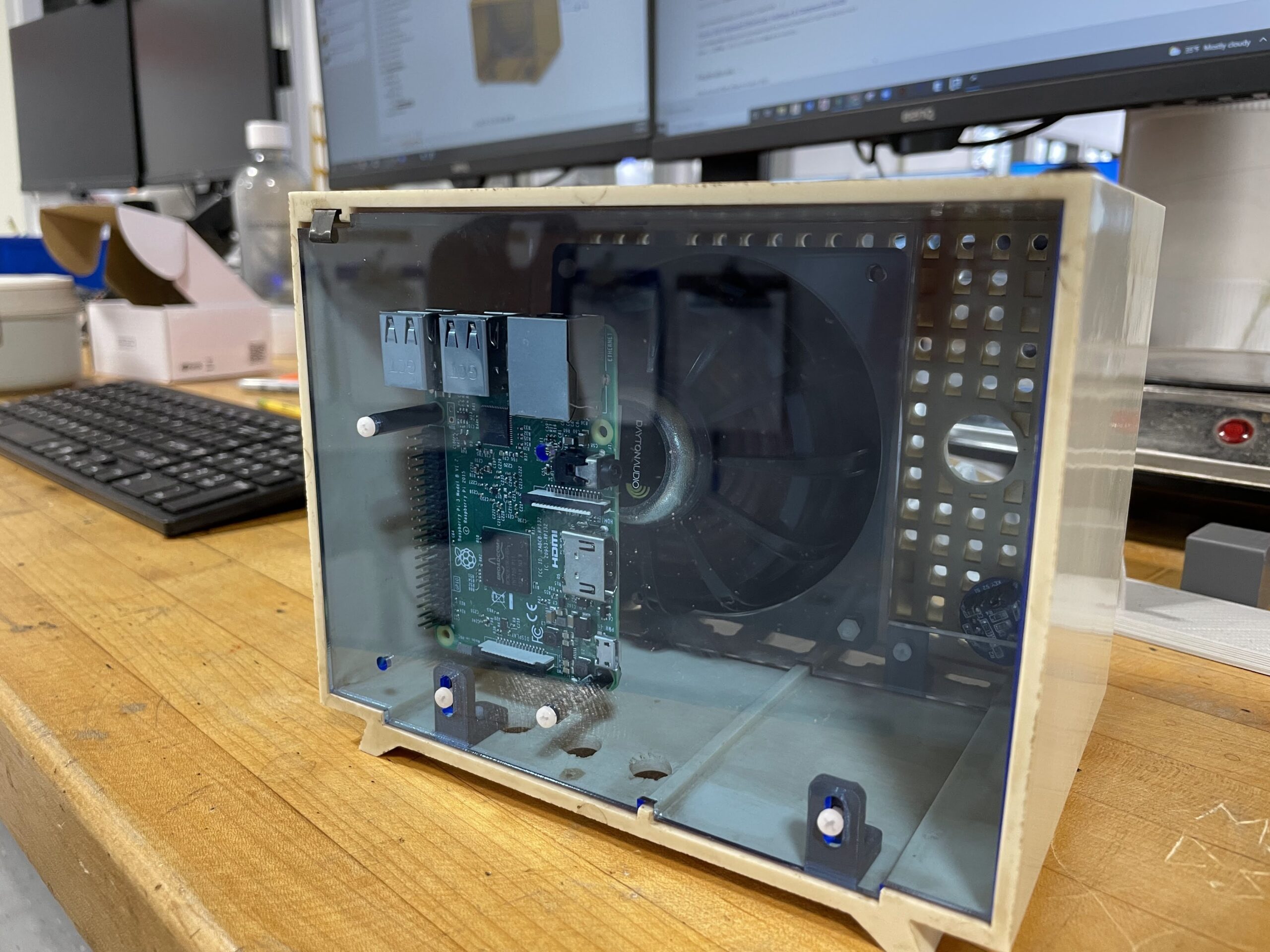Junior student Clark B has been working on circuitry to control an actual Stop Light that was donated to the shop a few years ago. Many students had thought about working on a project with the Stop Light, but nobody truly took on the project as Clark has done. So far he has written a program for an Arduino that will allow the light to turn on to reflect the daily class schedule. Green light for when we are in class time, yellow for 5 minutes before the bell, and red for time between classes. Along with his Arduino, he has a relay to control the AC voltage that turns on the light.
Additionally, we repurposed an old rolling television stand that was being dumped in the trash. The wheels were broken so we drilled new holes in the steel frame, tapped the holes for M10 bolts, and used some new casters we had in our storage room. To connect the light to the stand, another student, Senior Daniel R, 3D modeled and printed a connecting element that rests on the poles of the TV stand, and allows the Stop Light to slip onto the top of the connector. It’s coming together very well at the moment, and just a little more wiring and finalizing the coding should complete the project. Will post again when completed. For now, some photos below.
